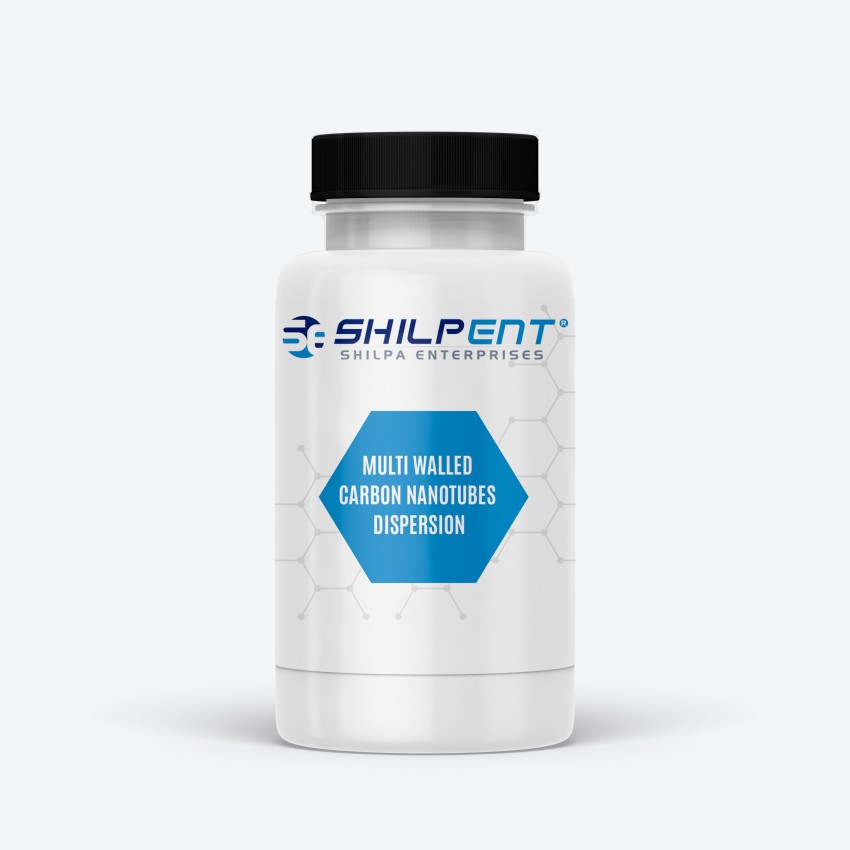
Carbon Nanotubes
Description and Specifications Carbon Nanotubes Carbon nanotubes, abbreviated as CNTs, are one of the most robust materials available on earth. It has developed from graphene, an allotrope of...


Dispersion of multi walled carbon nanotube (MWCNT) means spreading it evenly in a liquid so it don't clump together. This step is crucial because only a well-dispersed mixture enables the unique properties of MWCNTs to be utilized effectively in practical applications. MWCNT is a cylindrical nanostructure composed of multiple concentric graphene layers, each just one atom thick, forming a tube-within-a-tube structure. In dispersion, the nanotube is separated and stabilized in a solvent, overcoming its natural tendency to agglomerate due to van der Waals forces.
To maximize the electrical, thermal, and mechanical properties of MWCNT, it needs to be separated and well-dispersed in the liquid in which it is mixed. This means the process must be carefully managed, often using surfactants or chemical treatments to prevent the nanotubes from sticking together and to maintain the mixture's stability over time. MWCNT used for dispersions is generally about 10 micrometers in length and have diameters between 5 and 20 nanometers. The resulting product is a homogeneous black liquid or colloidal system, free from visible aggregates, with good thermal and electrical conductivity. It is chemically stable, making it ready for direct incorporation into advanced formulations.
MWCNT dispersions is valued in both research and industry for its unique properties:
Lightweight Structure: These dispersions combine low weight with high strength, making it suitable for use in advanced materials where reducing mass is important.
Durability: The carbon atoms present in the nanotubes are arranged in a strong sp² structure, giving the material high resistance to chemical damage and mechanical stress, even in demanding environments.
Electrical Conductivity: When evenly dispersed, the nanotubes create effective electrical pathways, which is why it is often used in conductive coatings, films, and inks.
Tensile Strength: Adding MWCNT dispersions to materials such as polymers or ceramics helps increase its strength and stiffness, thereby improving overall resilience.
Thermal Stability: These nanotubes can withstand heat up to around 600°C without breaking down, making it suitable for high-temperature applications.
Dispersed MWCNTs is utilized in areas that require high performance. In water filtration, it helps to remove harmful particles. In energy systems such as batteries and solar cells, dispersions aid in coating electrodes, enhancing capacity, and improving cycle life. In medicine, well-dispersed nanotubes facilitate drug delivery and cancer treatment by enabling more effective targeting of target areas. Polymer manufacturers add dispersions to plastics to enhance its strength and conductivity. In the sports and automotive sectors, it is used to strengthen lightweight frames. Biomedical use includes supporting bone and joint implants. Electronics rely on these dispersions in miniaturized components, such as transistors and sensors. As dispersion techniques improve, their applications continue to grow.
Shilpa Enterprises specializes in high-quality, customized Multi Walled Carbon Nanotube dispersions. We are the manufacturer and supplier of our products with rigorous quality checks to ensure their performance remains steady and reliable. With over ten years of experience, we provide customized solutions with bare minimum price for industries including electronics, energy, healthcare, and precision materials. Contact us to discover how our MWCNT dispersions can help the operator to achieve the next breakthrough.
3 other products in the same category:
Description and Specifications Carbon Nanotubes Carbon nanotubes, abbreviated as CNTs, are one of the most robust materials available on earth. It has developed from graphene, an allotrope of...
Specification and Description of Multi Walled Carbon Nanotubes Multi Walled Carbon Nanotubes (MWCNTs) is nothing but multiple graphene layers rolled up into hollow concentric tubes. It is a...
Specifications and Details Single Walled Carbon Nanotubes Single walled carbon nanotubes (SWCNTs) are unique materials with many outstanding features. In this simple and easy-to-understand guide,...